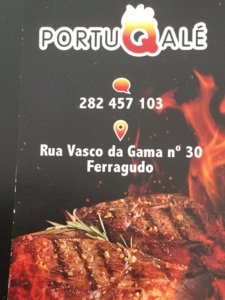Newsletter August 2021
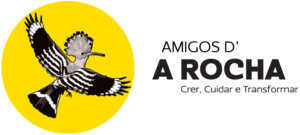
Welcome to our August Newsletter 2021
Dear Friends, due to the current situation we have not be able to organize any Friends events. The situation is still unstable, so it is hard to schedule Events. We are hoping that we can bring you some good news later in the year about starting our Friends Events again. We would like to remind you that our center Cruzinha is now open on Thursday mornings, with limited numbers of visitors (please book with the link on our calendar page) and with Covid Safe implemented measures.
 Thank you for supporting us!
Thank you for supporting us!
Enjoy the summer!
Helen & Filipa
S
N
A
P
SHOT

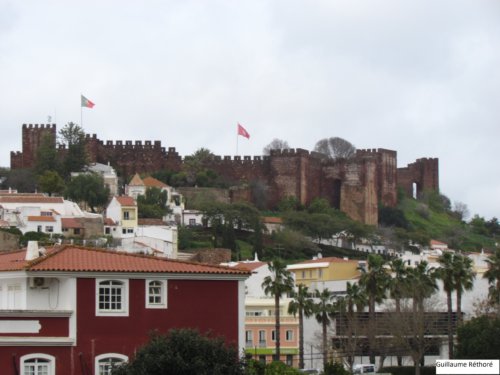
Silves
Age: 1000 BC
Town (since 1266)
Population: 37 126 (Census 2011)
Area: 680,06 Km2
Silves is an Algarvian historical city, within the Faro District; it is limited in the North by Ourique, Northeast by Almodôvar, East by Loulé, Southeast by Albufeira, Southwest by Lagoa, West by Portimão and Monchique, Northwest by Odemira and South by the Atlantic Ocean. Silves is divided into 6 Parish: Alcantarilha e Pêra, Algoz and Tunes, Armação de Pêra, São Bartolomeu de Messines, São Marcos da Serra e Silves. The city is in a strategic point, on a small hill and at the meeting of two important water courses: River Odelouca and River Arade.
The history of Silves is very old, there are trace elements from the pre-historic age, the area was occupied by the Phoenicians (1000 BC), but the village probably “born” with the Romans, which named it “Cilpes”, there are several Roman artefacts found in the area. Although the Moors where the ones who had a major role in the development of the area, between VIII and XIII centuries, named the city Xelb; it was an important economic, social, and cultural centre, known by the “Bagdad of the Western”. The Moors built the castle, one of the most well preserved in the country, and famous by the reddish colour of it stones.
The first attempt to conquer Silves was in 1189 by the King Sancho I, but the Moors managed to take the city back and just in 1246, during the kingdom of King Afonso III, the city was finally conquered by Sir Paio Peres Correia. In 1266, the King Afonso III gave the Charter to Silves and it was considered the capital of the Algarve. During the XV century, Silves was an important maritime commercial port, agriculture area and had a shipbuilding industry, some of the local populations were involved in the Discoveries, the most famous was Diogo de Silves, who discovered the Azores in 1427. After the XVI century the silting up of the Arade River was bad for the development of the city and in 1534 it was no longer the capital of the Algarve. The following years were of crises as the city suffered with the earthquake of 1755 which destroyed most of the buildings. At the end of the XIX century, the development of the cork oak industry was responsible for the economy recovery and Silves was considered the most important cork oak producer and exported all over the world.
Nowadays Silves is famous for the orange tree orchards and for its historical patrimony. The amazing red castle is worth it a visit.
IFO’s – Identified Flying Objects…
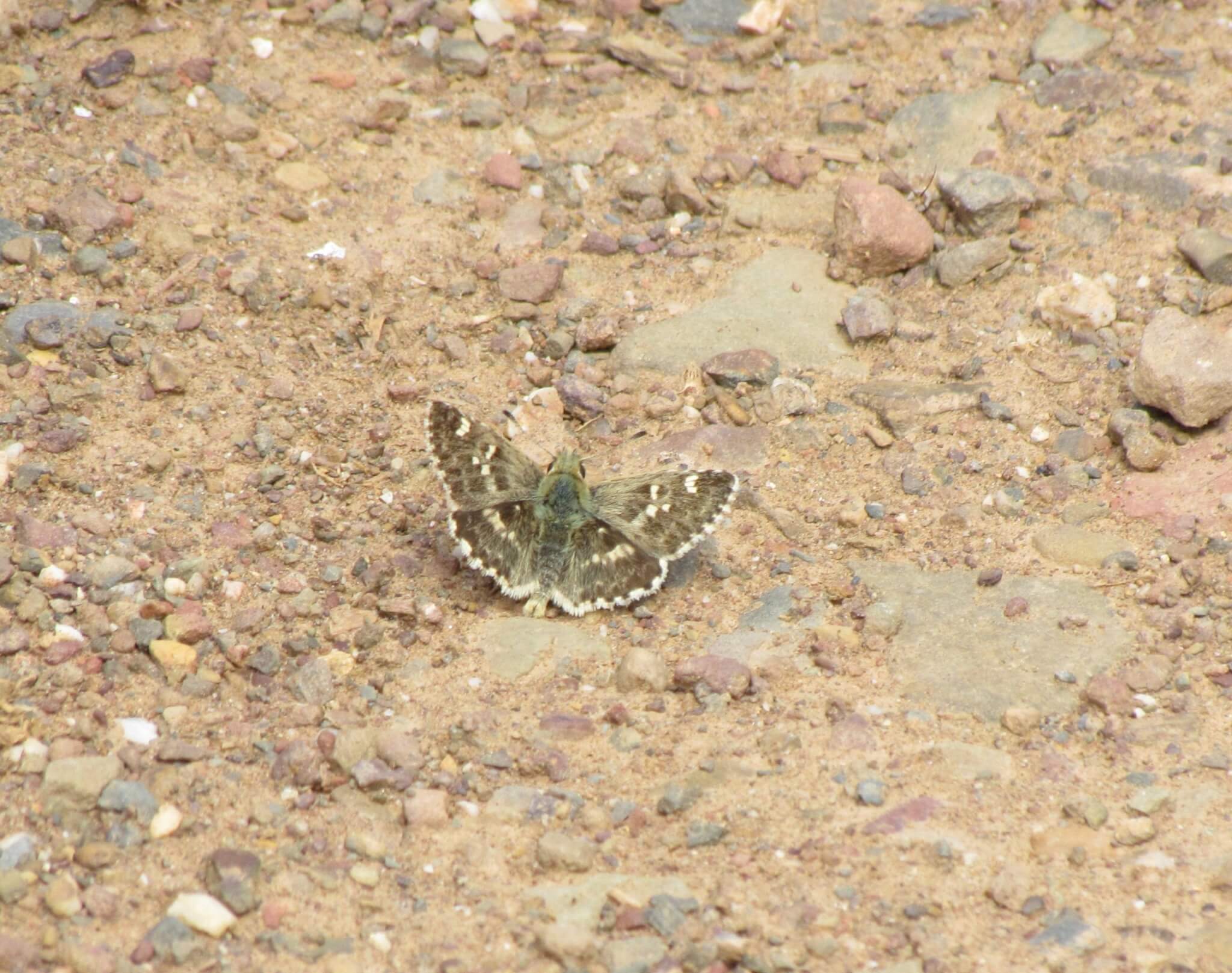
Sage Skipper
(Muschampia proto, Ochsenheimer, 1808)
Photo by Guillaume Réthoré

Morphology: It is a small butterfly from the Hesperidae Family, with a wingspan between 14 to 15 mm. The upper side of the wings have dark olive grey ground colour with yellow shades and white marks; the white markings are quite variable but as a well-marked central spot on the forewing. The undersides of the wings are paler with white marks. The butterflies fly from May to July (flight time elongated sometimes from April to September).
Habitat: Hot and dry habitats, such rocky slopes, steppes, pastures, open areas in shrublands and dry grasslands.
Distribution: Northwest Africa, Iberia Peninsula, Mediterranean coast of France, Southern Italy, Albania, Greece, and Asia Minor. In Portugal occurs only in the south and West-Centre.
Notes: The larvae feeds on Sages (Phlomis sp), especially Jerusalem Sage (Phlomis fruticosa). In Portugal feeds on Purple Jerusalem Sage (Phlomis purpurea). Locally common, the major threats are agriculture intensification.
Tweet… Tweet…

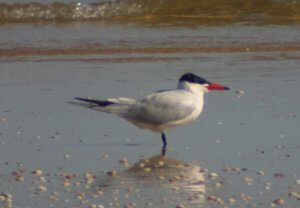
Photo by Guillaume Réthoré
Caspian Tern
(Hydroprogne caspia, Pallas, 1770)
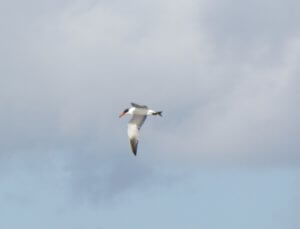
Photo by Filipa Bragança
Identification: It’s a large tern from the Laridae Family, with a wingspan between 127 and 145 cm. The plumage is light grey above and white underneath (neck, throat, belly, and tail), the wing points are black, the bill is strong and red, dagger shape; it has a black cap. The juveniles have an orange bill. In winter it keeps the black cap, but the forehead is streaked. Males and females are alike.
Habitat and Ecology: Occurs in wetlands such as estuaries, coastal lagoons, salt pans and other marine coastal areas; breeds in large lakes and ocean coasts (remote offshore and low islands). It can nest in colonies or singly with other Gull species, the nest is on the ground. Feeds mainly of fish, hovers over the water surface and dives for it.
Distribution: Scattered distribution, breeds in North America and locally in Europe (Baltic Sea and Black Sea), Asia, Africa, and Australasia (Australia and New Zealand). Winters in southern areas (southern coasts of North America, Africa, Southern Asia). The populations of Australasia are resident. In Portugal it is a passage migrant and an unusual wintering bird (winters mainly in the Algarve).
Threats: Least Concern (LC) in the International Union for Conservation of Nature (IUCN) red list. The population trend seems to be increasing, the major threats are breeding disturbance. The Caspian Tern is the largest Tern in the World.
DID YOU KNOW? 
-
A Rocha Portugal is working with Lagos Council to publicize and raise awareness for the importance and the biodiversity of some areas in Lagos: the Meia Praia Dunes, Ponta da Piedade (Important Bird Area) and Woods of Barão de São João (Protected area), this is part of the environmental education program with schools, for kids attending summer activities and for older people in the area.
- This year A Rocha Portugal will be in Estômbar again to take part in some activities organized by Lagoa Council. The activities will take place during the month of September on the 13th, 14th and 16th, in Fontes de Estômbar (more information in September’s Newsletter).
- The garden of Cruzinha is full of vegetables! Jasper and Tayler are taking good care of the land and are now growing some of their own vegetables: tomatoes, peppers, courgettes, green beans!
-
Live Science in Summer is back! (Ciência Viva no Verão). From 15th of July to 15th of September and there are several free activities all over the country to learn more about science! A Rocha Portugal is part of this project with the activities of bird ringing and moth monitoring. Visit us! Check here for more information.

5th August at 10:15 – Moths the unloved ones
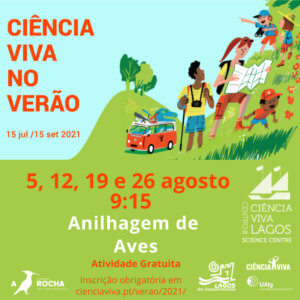
5th, 12th, 19thand 26th August at 09:15 – Bird Ringing

2nd and 9th September at 10:15 – Moths the unloved ones
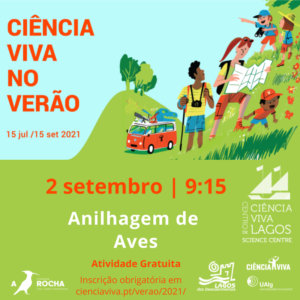
2nd September at 09:15 – Bird Ringing
-
July has been a quiet month for birds, although some migrants already began they journey back to the winter grounds, slowly they start to move south. Some of the birds seen at Ria de Alvor, Nature 2000: Greater Flamingo (Phoenicopterus roseus) (more than 200 individuals), Gull-billed Tern (Gelochelidon nilotica), Eurasian Sparrowhawk (Accipiter nisus), Short-toed Eagle (Circaetus gallicus), Booted Eagle (Aquila pennata), Black Kite (Milvus migrans) and Little Ringed Plover (Charadrius dubius) (in Odiáxere salt pans).
- In July at our Ringing Station, we captured some interesting and colourful birds: Golden Oriole (Oriolus oriolus), Kingfisher (Alcedo athis), Little Owl (Athene noctua), Melodious warbler (Hippolais polyglottal) and Nightingale (Luscinia megarhynchos).
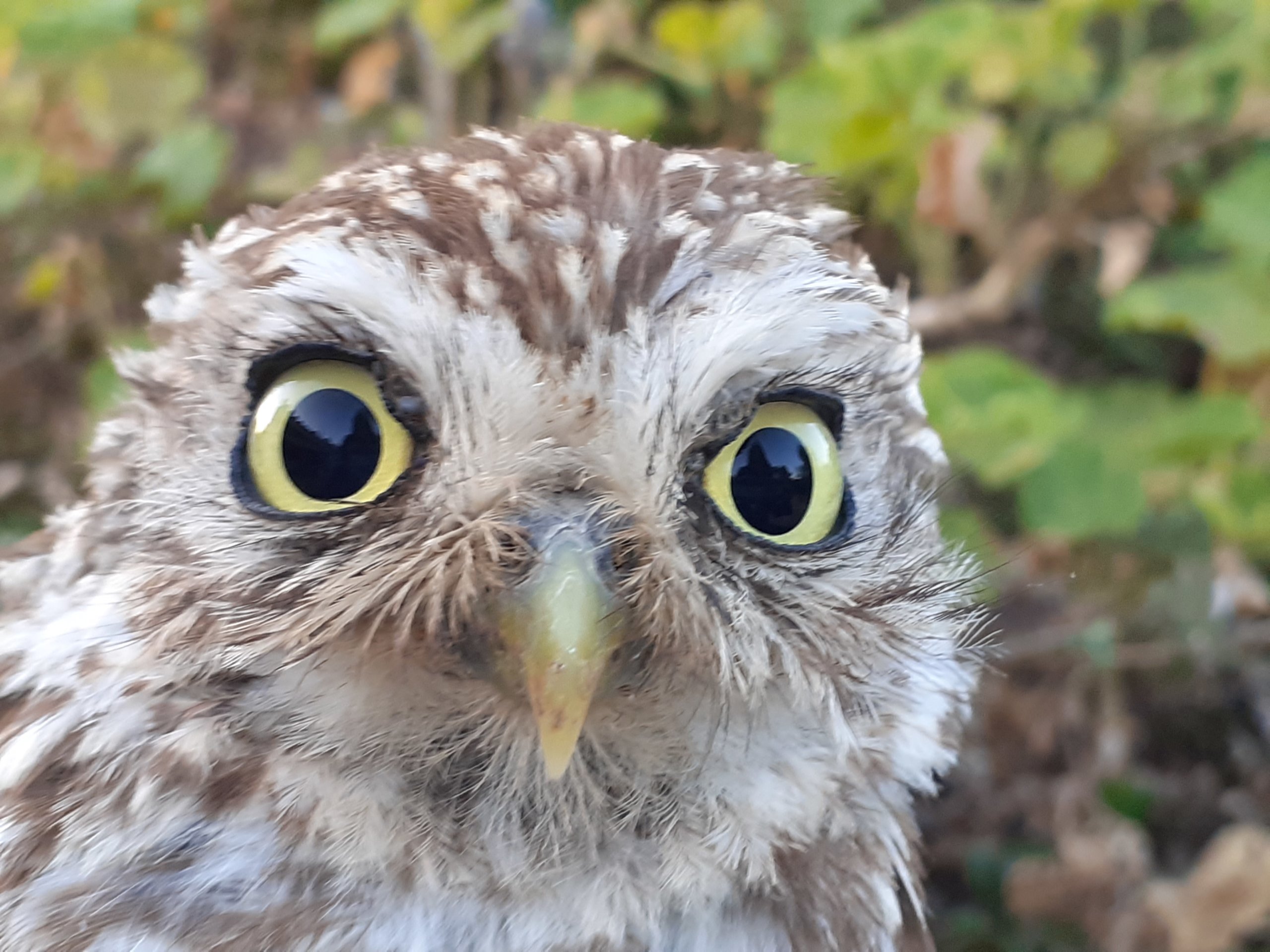
Little owl (Athene noctua)

Nightingale (Luscinia megarhynchos)

Golden Oriole (Oriolus oriolus)
The EU (European Union) has new rules to reduce plastic waste!
- Single-use plastic cutlery, cotton buds, straws, and stirrers to be banned by 2021
- 90% collection target for plastic bottles by 2029
- More stringent application of the “polluter pays” principle
Watch for more information on plans for single use plastics here


When we think about summer, maybe we think about the sun and the beach! Not only images remind us of things, smells and sounds can evoke memories! The sound of summer for sure is the sound of the “cicadas”! But for me the sound of summer is the sound of the Common Swifts! It is possible to hear them in the cities and villages, early in the morning or at sun set! They fly so fast and make this huge scream! They are among the fastest birds in the world; the Common Swift can reach 112km/h. Simply amazing! Their wings are slim and pointed, like a boomerang and they are very different from Swallows; both species feed on insects which they catch when flying and form large groups high in the sky, Swifts spend most of their lives flying! On my terrace sometimes it seems as if I am flying with them and if I raise my hand, I can almost touch them! Every day a small group of 3 Common Swifts fly around, “playing” with the House Martins. I wonder if anyone else notices them… Not long ago in one of my classes, I showed the kids this species and told them how easy it is to see and hear them in the cities; they made a very interesting comment (that I never had thought about it), apart from the fact that they did not ever notice them: “They don’t have feet!”. The Latin name of Swifts is Apus, which in ancient Greek means “without feet”! Kids notice the smallest details 😉
Filipa
 INVASIVE SPECIES
INVASIVE SPECIES
Mimosa or Silver Wattle (Acacia dealbata, Link)
Clade: Angiosperms
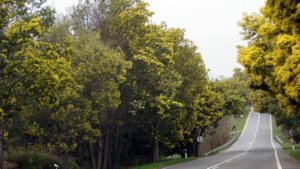
Acacia dealbata – N246 – Castelo de Vide – Alpalhão
Order: Fabales
Family: Fabaceae
Origin: South-eastern Australia (New South Wales, Victoria, and Tasmania)
Size: up to 20 metres height
The Acacia Mimosa it is a fast-growing evergreen tree, the leaves are glaucous grey-greenish to silver-green, bipinnate, with 10 to 26 pinnae pairs, which are divided in 20 to 50 pairs of leaflets. The flowers are bright yellow growing in panicles arranged in globular flower heads. The fruits are brownish-red compressed pods, with several seeds. The tree flowers between January to April.
In its natural range, can grow along water courses, dry forests and in moisty mountain forests, sometimes is bark is covered with a white lichen, which probably is responsible for the common name “silver”; the Latin name “dealbata” also means “covered in white powder”.
Propagation of Acacia Mimosa occurs by the production of root and coppice suckers and by seed, it produces thousands of seeds which remain viable in the soil for many, many years. Seeds can also be transported to other places by animals and water. The germination of the seeds is stimulated by fire. Can grow fast and form dense populations, stopping the growing of native species, diminishing the flow of water courses, and increasing erosion; the leaves are Nitrogen rich and can change the chemical properties of the soil, preventing native species to grow and support the growth of other Acacia species. This species is also drought tolerant and one of the first plants to grow in cleared land.
 This Mimosa was introduced in warm temperate regions as an ornamental, for fixing soils and has a forestry plant. In Portugal it is thought to have been introduced in the XVIII Century, together with other Acacia species occupies an area between 30 to 60 thousand hectares. This plant has been introduced in many countries and it is considered an invasive species in South Africa, parts of India, Sri Lanka, France, Portugal, and Spain. In Portugal it is considered one of the worst invasive species.
This Mimosa was introduced in warm temperate regions as an ornamental, for fixing soils and has a forestry plant. In Portugal it is thought to have been introduced in the XVIII Century, together with other Acacia species occupies an area between 30 to 60 thousand hectares. This plant has been introduced in many countries and it is considered an invasive species in South Africa, parts of India, Sri Lanka, France, Portugal, and Spain. In Portugal it is considered one of the worst invasive species.
The control and eradication of this species is extremely hard and expensive. Some countries start to use biocontrol or natural control, using species native from the same areas of the invasive species. This species can reduce for example, the number of seeds produce by these plants, although before it is necessary a long period of study to access the effects of these “natural controls” in the ecosystems.
POPPED UP

Family: Lamiaceae
Identification: It is evergreen shrub, up to 50 to 100 cm height. The stems are highly branched and hairy; the leaves are lanceolate, velvet dark green in the upper surface and whitish and hairy in the inner surface. The flowers are pinkish and grow in crowns in the leaf axils. Flowers from February to July.
Habitat and distribution: Scrublands, woodland edges, uncultivated lands with high solar exposure; grows in poor, stony, soils and it is resistant to drought. Native from Iberia Peninsula and North Africa.
Notes: The plant was used in old times as a mop for cleaning pots and kitchen utensils due to the saponin (natural soap); it was also used in traditional medicine as an anti-inflammatory.
Purple Jerusalem Sage
(Phlomis purpurea) (L.)

Photo by Filipa Bragança
DATES TO REMEMBER

5th, 12th, 19th, 26th August – Cruzinha Bird ringing display & Moth Talk (10 to 12 am). Book here
15th August – Public Holiday – Nossa Sra da Assunção (Religious Festival)
Thank you for supporting the Friends of A Rocha Portugal

Dr Roy Rodrigues
Av. Do Brasil, Qta das Palmeiras, Lt P2, R/c A, 8500-299 Portimão
(+351) 282180683
royaldente@gmail.com

Sítio da Amoreira, Lote 12,
Alvor, 8500-045 Portimão
(+351) 282412562/ 925433047
www.transfair.com.pt
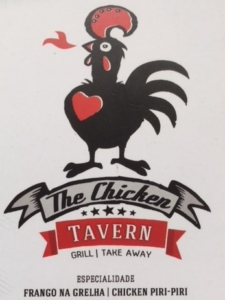
Urbanização Mar e Serra n° 47, Alvor
8500 – 783 Portimão
(+351) 911597735
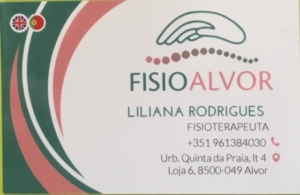
Physiotherapy, Massages (relaxation, sports, therapeutic)
Other therapies
Beauty (manicure, pedicure, hair removal, facials)
Open Monday to Friday
Thought of the month 
“Everything is worthwhile when the soul is not small.” Fernando Pessoa (Portuguese poet, writer, literacy critic, translator, publisher and philosopher, 1888- 1935)

LETS BE GREEN – LETS BE GREEN – LETS BE GREEN 
Coffee – it is a beverage that boosted the industrial revolution Now it is an industry that, economically, makes millions! Coffee grows in tropical and sub-tropical regions, it can be found in some of the most vulnerable ecosystems.
Coffee growing is responsible for the deforestation of 2,5 million acres in Central America!
Coffee production generates water pollution and soil destruction!
Sun-growing coffee uses intensive pesticides and chemicals!
Sun-growing coffee is responsible for the destruction of bird’s habitats and biodiversity loss!
During the manufacturing of coffee, there is a large amount of waste!
Coffee pods produce a huge amount of waste (very few are recycled)!
What to do?
- Choose coffee produced with traditional growing techniques- shade-growing coffee (coffee plants grow beneath mature trees, mimicking the way coffee plants grow naturally in these regions)
- Choose coffee brands with the seal “Fair Trade Alliance” and “Rain Forest Alliance’s”

- Try to use refillable pods. They are compatible with most Nespresso machines, and you can refill them with coffee that you love. You will probably save some money too! You could try compostable pods to reduce the amount of waste going to landfill, make sure to compost them.
LETS BE GREEN – LETS BE GREEN – LETS BE GREEN
Butterflies Report
Since June 2019, A Rocha has been doing a Butterfly Monitoring in a transect around Cruzinha (see Newsletter August 2020). Recently the Butterfly Report 2019-2020 was published.
The year of 2020 was the first with visits all year around, between February and November (was not possible to do visits in January and December due to weather conditions).
In 2019 there were 137 individuals observed and identified 14 different species. In 2020 we counted 1225 individuals and identified 27 species. In 2019 the two most abundant species were the Large White (Pieris brassicae) and the Southern Gatekeeper (Pyronia cecilia). In 2020, the two more abundant species were the Small White (Pieris rapae) and the Meadow Brown (Maniola jurtina). Due to the difference in visits and study period between the years it is difficult to compare data. Although Spring time is the best season for butterflies when they are more abundant and there is a diversity of flowers. The most abundant Family for both years was the Nymphalidae.
During 2020 we observed species from the 5 Families present in Portugal: Hesperidae, Papilionidae, Pieridae, Lycaenidae and Nymphalidae.
See the full report here.

Meadow Brown (Maniola jurtina)
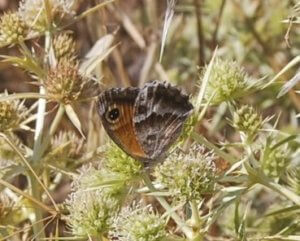
Southern Gatekeeper (Pyronia cecilia)

Small White (Pieris rapae)
Photos by Filipa Bragança
Sustainability Champions 
Sustainability Champions from around the World– Looking at ways to curb pollution and waste management.
We would like to thank Daniel Hartz, the founder of Sustainability Champions for giving us the permission to share this information.
 Charles Keppler & Serena Omo-Lamai from Syracuse University designed FibreFree a laundry ball to catch released microfibers in a load of laundry, it won a James Dyson Award. Hundreds of millions of microfibers are released very day from washing synthetic clothing, and these microscopic plastic fibres are polluting our oceans. FibreFree is a microfiber trapping device resembling a laundry ball, features a porous shell with a recyclable filter on the inside. The filter consists of dense, interlaced strands that catch microfibers while allowing free flow of water and heat. The FibreFree serves three functions: Combats the catastrophic pollution caused by washing synthetic clothing, replaces toxic dryer sheets, and reduces drying time, thereby saving energy.
Charles Keppler & Serena Omo-Lamai from Syracuse University designed FibreFree a laundry ball to catch released microfibers in a load of laundry, it won a James Dyson Award. Hundreds of millions of microfibers are released very day from washing synthetic clothing, and these microscopic plastic fibres are polluting our oceans. FibreFree is a microfiber trapping device resembling a laundry ball, features a porous shell with a recyclable filter on the inside. The filter consists of dense, interlaced strands that catch microfibers while allowing free flow of water and heat. The FibreFree serves three functions: Combats the catastrophic pollution caused by washing synthetic clothing, replaces toxic dryer sheets, and reduces drying time, thereby saving energy.
The FibreFree ball is made of 100% recyclable plastic, the filter can sift to 1 micron catching even the smallest microfibers, it collects 40%+ of microfiber per wash. Charles and Serene hope that their FibreFree gets into as many homes as possible and we can help to protect our oceans, marine life, and our food supply.

Save the date: Sagres Birdwatching Festival is back 
From 1st to 5th October, Sagres will once again host Portugal’s largest birdwatching and nature event. In October, thousands of birds fly over the Algarve, on their way to wintering grounds in Africa, putting on a show worthy of a festival.
 To celebrate these feathered visitors and make the most of this incredible sight, the 12th edition of the Birdwatching Festival & Nature Activities presents 5 days filled with activities for all. From birdwatching sessions on land and at sea to the ever-popular bird-ringing sessions, the Festival offers a wealth of opportunities for nature-lovers to discover that the Algarve is much more than beaches. There’s also plenty for birdwatchers’ friends and families, including walks, hikes, talks and challenges for young ones.
To celebrate these feathered visitors and make the most of this incredible sight, the 12th edition of the Birdwatching Festival & Nature Activities presents 5 days filled with activities for all. From birdwatching sessions on land and at sea to the ever-popular bird-ringing sessions, the Festival offers a wealth of opportunities for nature-lovers to discover that the Algarve is much more than beaches. There’s also plenty for birdwatchers’ friends and families, including walks, hikes, talks and challenges for young ones.
Left photo by Alexandra Lopes Right photo by Marta Verdu
The programme will be published 10th August, when registrations open online here

Check the website for dates for organised tours
The Spoonbill (Platalea leucorodia) – part 2
Most of the birds wintering in Spain come from the Dutch colonies, some from France and Germany. This makes sense since the Dutch colonies are bigger than the French and German ones and the ringing effort in the Netherlands is bigger than in the other countries. 80 % of the ringed birds seen in Portugal come from the Netherlands, the rest from Germany and France. It is the opposite in Tunisia, only 3 Dutch birds have been recorded. 2 birds ringed in Denmark have been spotted in Spain and in 2009, birds ringed in Serbia and Hungary have been controlled there. In Tunisia, most birds come from the colonies in Eastern Europe and ringed wintering birds came from Austria (13), Hungria (10), Croatia (8), Serbia (1), Slovaquia (1), Italy (23) and Grecia (8). Some of the birds ringed in Marismas del Odiel have been controlled breeding in other colonies, especially in France, the Netherlands and Portugal, indicating an important flux of genes between the west European populations.
The Spoonbill is a common winter visitor at Ria de Alvor, it is scarcer in summer. Since 2012, the species has been seen all year round. Before 2000, numbers were low, and it was seen mostly on passage. Between 2011 and 2019, the maximum number seen was around 40 birds, but it reached a new maximum in 2020 with 88 birds in October. Before the beginning of the year 2000, numbers were low even though in some years it reached over 20 birds. Since 2011, the maximum number registered has always been above 30 birds but there is almost no data available between 2000 and 2010 (Fig 1).
The first Spoonbill was seen in 1986 and the first ringed one was only recorded 3 years later, it was a Dutch bird. However, the 2nd ringed bird was only reported in 2008 (possibly because of a lack of effort). This number increased to get to a first peak in 2011, with 12 ringed birds seen, before going down and increasing again and peaking at 13 birds in 2019. The average number of ringed birds seen since 2008 is 7 (Fig 2).

Figure 1: Maximum number of Spoonbills recorded at Ria de Alvor

Figure 2: Number of ringed Spoonbills seen at Ria de Alvor.
In total, 48 birds have been controled at Ria de Alvor. 80% of the birds come from 2 countries : the Netherlands with 30 birds (63%) and France with 8 birds (17%). The other birds came from Spain (5), Germany (4) and Denmark (1) (Fig 3).
The Dutch Spoonbills come from 10 colonies in the Netherlands but Schiermonnikoog provided a third of the birds. Many colonies have only one bird controlled at Ria de Alvor(fig 4). For the French birds, all but one came from Grand-Lieu but they all came from the same area in Western France.
The proportion of Dutch spoonbills controled at Ria de Alvor changed a lot between years and goes from 0 to 100%. Since 2008, the year with the lowest number of Dutch birds was 2019, while 2011 and 2012 were the year with most Dutch birds (9 out of 12 in 2011 and 9 out of 10 in 2012). 2010, 2014 and 2019 were the year with the biggest diversity in the origin of the spoonbills (4 countries). 2011 was the year with most birds from France and 2010 and 2019 are the only years with German birds controled at Ria de Alvor. However, these birds came from different ringing program. In 2010, the bird was carrying a combination of colour-rings (like the Dutch birds) while in 2019, the spoonbills were carrying ELSA rings (octogonal ring with a unique code). Spanish birds were only seen in 2012 and 2019 and in that year 4 birds stayed a few days at Ria de Alvor. Some of these birds had only be reported in Africa. The only Danish bird ever seen was in 2014 at Abicada.
The oldest Spoonbill recorded at Ria de Alvor was ringed in the Netherlands in May 1994 and controlled in November 2013, this birds was 7010 days old (19 years, 2 months and 11 days). This birds has been spotted in the Netherlands, France, Spain and Portugal. The shortest time between ringing and control at Ria de Alvor was 116 days (3 months and 26 days). This birds had been ringed in the Netherlands in July 2009 and controlled at Ria de Alvor in November. Some birds are very faithful to their wintering sites and have been seen many times at Ria de Alvor. One of them was seen every winter between 2008 and 2020 and others have been visiting Ria de Alvor for 10 years or more.

Figure 4: Origin of the Dutch Spoonbills seen at Ria de Alvor.
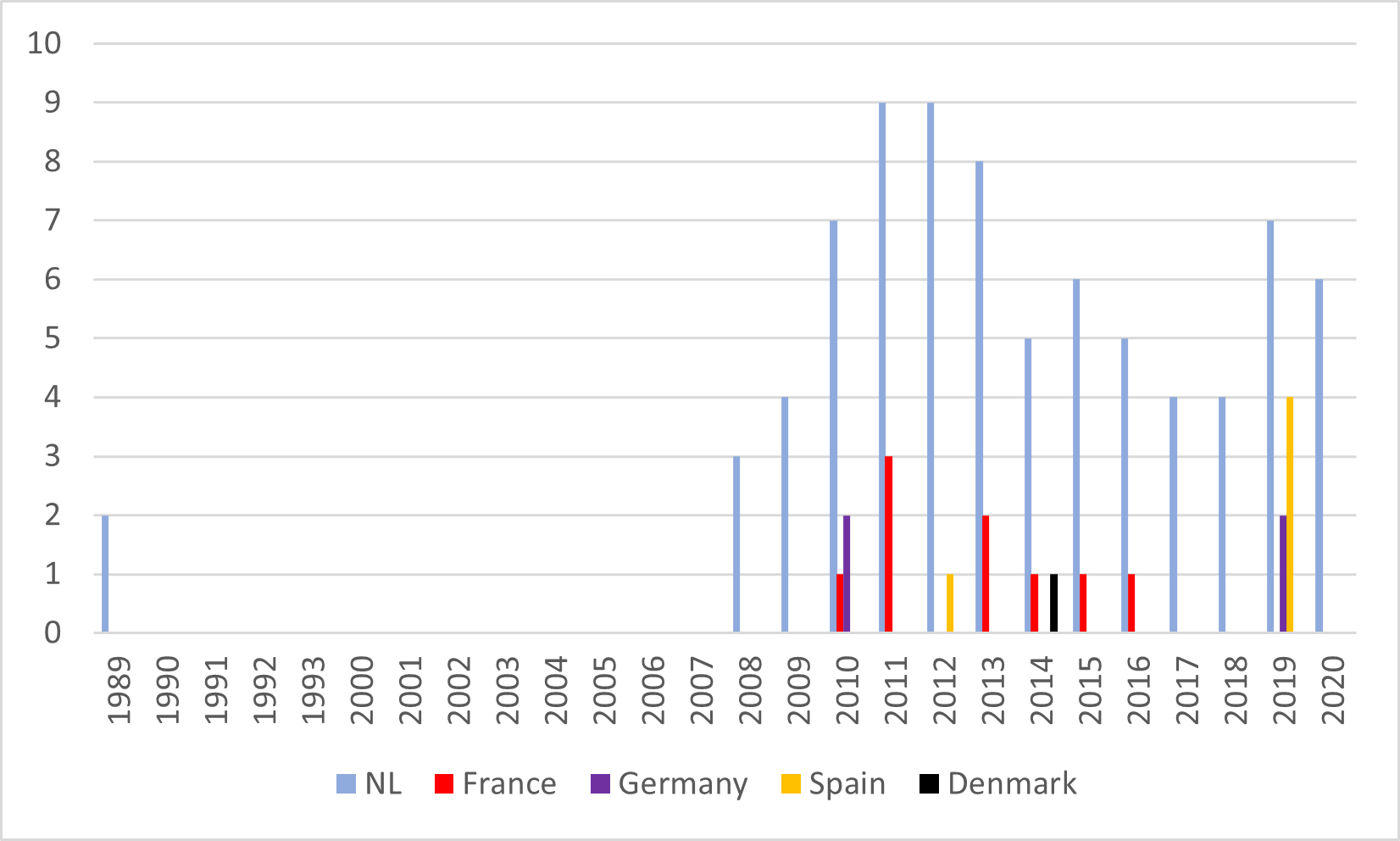
Figure 5: Origin of the ringed Spoonbills seen at Ria de Alvor each year.
Text and Graphics by Guillaume Réthoré
If you have any queries please do not hesitate to contact us:
friends.arpt@arocha.org
Or visit us on our open day: Thursdays from 10:15 to 12:00 am
See map: https://arocha.pt/en/contact-us/
GPS coordinates
37°08’39.8″N (37.1444) 8°36’29.2″W (-8.6081)
(+351) 282 968 380
Thank you for supporting us!
Hope to see you soon!


